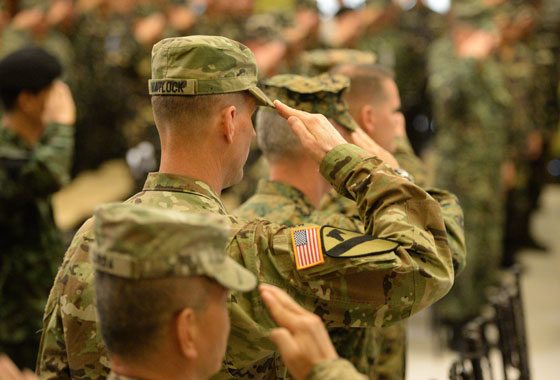AMERICAN soldiers deployed to Mindanao won’t be pulled out, the Department of National Defense said Wednesday.
Defense Secretary Delfin Lorenzana made the statement after President Rodrigo Duterte said on Tuesday the Philippines won’t cut its umbilical cord to its allies, a clarification prompted by the President’s statement on Monday that he wanted United States troops pulled out of Mindanao.
There are 107 US troops in Mindanao, part of the Joint Special Operations Task Force-Philippines (JSOTF-P) that provides assistance to Filipino soldiers, Lorenzana said.
The JSOTF-P operates under the Visiting Forces Agreement (VFA) between the Philippines and the US—a pact that allows US troops to train and advise the Philippine military without engaging in combat operations.
“They (US soldiers) are there because we don’t have enough capability [to secure the area]. We requested them to stay behind. What they are doing is limited to civil-military operations within the area in conjunction with our Armed Forces, but the bulk of their job is to manage their assets in Zamboanga City,” Lorenzana told lawmakers, referring to Camp Navarro.
Lorenzana presented the P178-billion proposed 2017 budget of the Defense department before the House appropriations committee on Wednesday.
“It’s just right for us to be allied with the United States because they are still the dominant military force in this part of the Pacific,” he said.
Lorenzana said US troops in Mindanao have two systems providing intelligence to their Filipino counterparts: the Intelligence Surveillance Reconnaissance system that can take images even at night, and a shadow drone system that hovers around Basilan and Sulu, lairs of the kidnapping and terrorist group Abu Sayyaf.
Muslim reprisal ‘unlikely’
The Cabinet official explained that President Duterte was concerned over the safety of the US troops, as they could be “subject to reprisal by the Muslims.”
But that’s unlikely, Lorenzana said, “because the US soldiers are just stationed in the camp.”
“They don’t go out of the camp alone. When they do, they are with a Filipino soldier and they are also armed,” he pointed out. “Let us remember that they are combatants, not civilians who are subject to kidnappings by terrorists.”
Washington said on Monday that Manila had not officially communicated Duterte’s demand to pull US military advisers.
Duterte on Tuesday said the Philippines would no longer conduct joint naval patrols with other countries in the disputed West Philippine Sea (South China Sea) to avoid getting into further disputes.
Three pacts
Lorenzana also clarified that the Philippines won’t junk its three defense pacts with the US: the VFA, the Mutual Defense Treaty (MDT) and the Enhanced Defense Cooperation Agreement (Edca).
The MDT inked in 1951 states that both parties will defend themselves against external armed attack, while Edca provides that US forces, contractors, vehicles, vessels and aircraft may conduct activities on agreed locations inside Philippine military bases.
Such activities include training, transit, support and other related activities; refueling of aircraft, bunkering of vessels, and temporary maintenance of vehicles, vessels and aircraft; temporary accommodation of personnel; communications; pre-positioning of equipment, supplies and material; and deployment of forces and materials.
“What the President said is we are not going to cut our umbilical cord. As I understood it, we will maintain our alliance with our traditional allies. The military cooperation between the Philippines and the United States is important because our neighboring countries that are our friends are also allied with the United States,” Lorenzana said.



